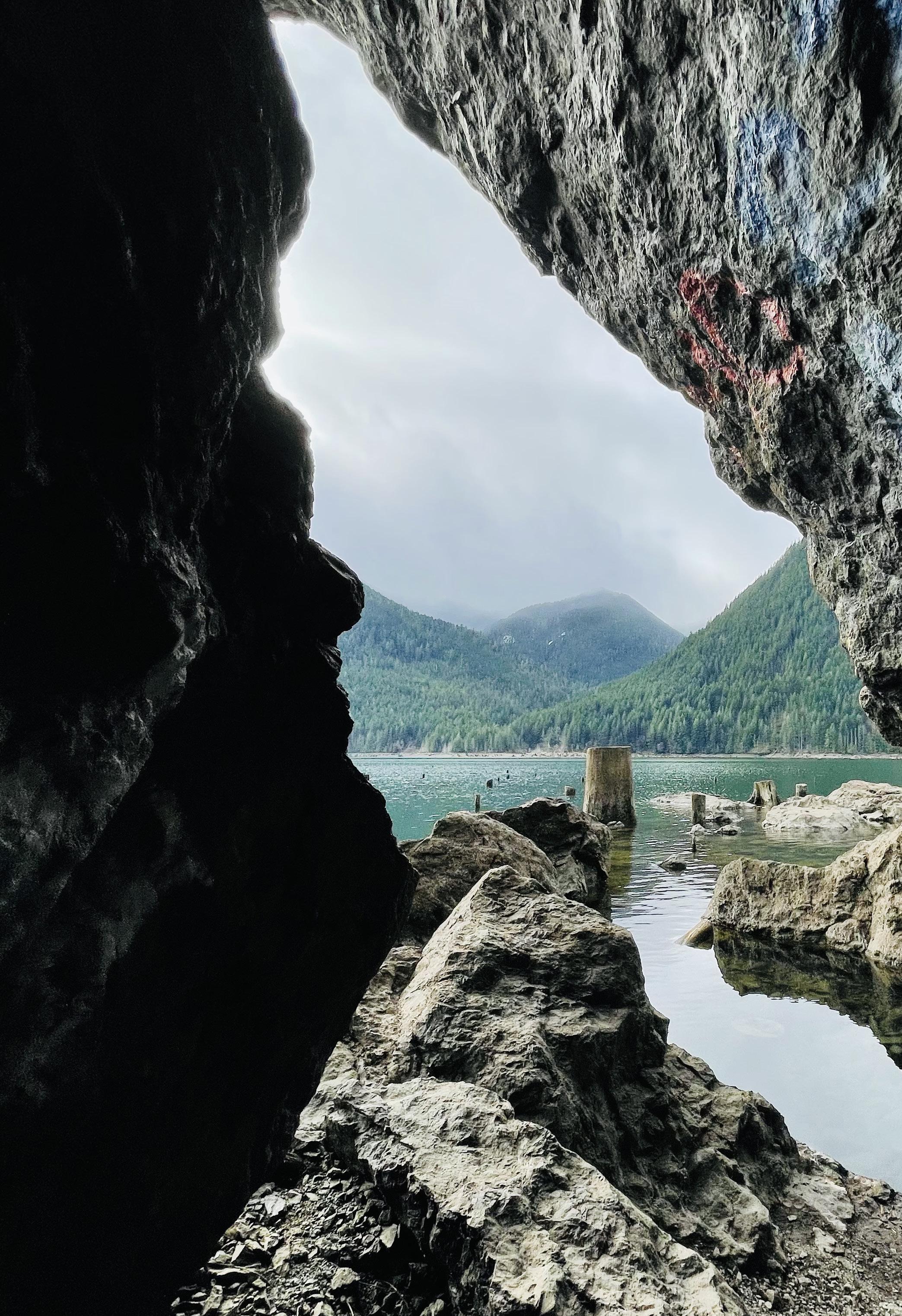
4 minute read
Seeing it from a different angle
from Fjord | Spring 2021
by Imagination
The last twelve months have presented challenges that many of us would never before have imagined in our quiet comfortable lives. As spring merges into summer and a light emerges at the end of this dark tunnel – we are dealing with the realization that things may never be what they once were. It's time to see it all from a different angle.
Take this above image for example. "Party Rock" or "Big Rock" at Lake Cushman, near the entrance to the Olympic National Park, has increasingly become a point of great contention. With limited public access to Cushman and its popularity for an adrenaline rush from cliff diving, this roadside stop has gained a negative reputation as a popular gathering place for drinking, violence, graffiti, and general disrespect.
During 2020 these issues were exacerbated. Cooped-up, frustrated and faced with shuttered businesses and activities, the restless hordes surged to public lands seeking diversion. The road to Lake Cushman became so overcrowded that the vehicles back up spanned as far as Hwy 101. Officials were forced to close access to non-local traffic during the peak tourist season. Infrastructure failed as Washington State Parks reported a 15-45% increase in attendance during 2020 at Hood Canal parks.
Yet this image was taken last weekend under that fated rock. If you headed to Big Rock today with the low water level of Lake Cushman, you'd find it hard to imagine anyone would even want to jump off it. Definitely a different angle.

The grotto under Party Rock
Surrounded by ominous points of stumps and "islands," the giant boulder is perched on smaller rocks creating a magical grotto with reflecting pools magnifying the beauty of the snow dusted treed hillsides plunging sharply into Lake Cushman.

Low water levels reveal a whole new world
The low water reveals massive stumps and rubble islands creating a fantastic landscape.
Lake Cushman Background
Lake Cushman was originally a straight broadening of the North Fork of the Skokomish River that was naturally dammed by gravel and debris deposited by glacial movement during the last ice age.

The grotto under Cushman's Big Rock - visible during low water.
This small lake was artificially dammed in the 1920s to meet the increased power needs of Tacoma after World War I. Cushman Dam No 1, one of the first major dams built in the Pacific Northwest, was designated a National Historic Place in 1988.
Taking over 500 men and 90,000 cubic yards of concrete, the arch designed dam holds back over 440,000 acre feet of water. The completed high-head, gravity-fed dam is 235 feet tall and 1100 feet long. The finished dam powers two 21,600 kilowatt generators producing 127 million kilowatt-hours annually to the Tacoma Power system – enough electricity for over 10,000 homes. There are two other dams associated with this project. Cushman Dam No. 2 (completed in 1930) provides a further 18,000 homes with power and the North Fork Powerhouse (completed in 2014) approximately powers 1,700 homes. This electricity is carried more than 40 miles by line to Tacoma with a water crossing over a mile long at the Tacoma Narrows – quite an engineering feat for 1926!

Stumps from a harvest nearly a century ago.
The Skokomish Tribe manages Skokomish Park formerly known as Lake Cushman State Park, an area that covers over 500 acres including the three boat launch ramps. In 2020 this facility was closed to public access further causing strain on alternate access points to the lake. It is expected to be open again later this spring as COVID-19 restrictions relax.
In 2009, federal agencies, Tacoma Power, and the Skokomish Tribe signed a $5.8 billion dollar claim settling long held disputes about the dam’s construction, lease, and impact upon the Skokomish River– particularly its salmon runs. As a result, Tacoma Power and the Skokomish Tribe have initiated some impactful salmon revitalization projects to promote the return of stocks to the North Fork of the Skokomish River. The spring of 2020 saw the first return of Chinook salmon to the North Fork since the dam was built over 80 years ago.
So this is kind of a dam analogy. This giant recreational lake was created by virtually flooding a tree filled valley. The buildings in the valley, notably the historic Antler Inn, were sacrificed to create the power progress.
Whatever the future holds, each season will present new challenges and new wonders. As February rolls into March our Sunday adventure at Cushman and Staircase revealed a grotto under Party Rock, epic sandbars of old growth stumps, and snow and no more than a dozen others walking the Staircase Trail loop, a beautiful peaceful mossy trek. You can be sure we will never look at things quite the same again but lets hope we find joy in seeing it from another angle.

Get you off the beaten track to discover your own piece of wonder. Be patient as we all navigate this new world and appreciate the lengths events, restaurants, stores and lodging are going through to be innovative in creating safe and fulfilling experiences for their guests and customers. Strive to see the other angle.










